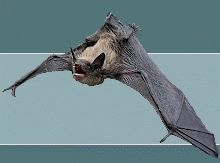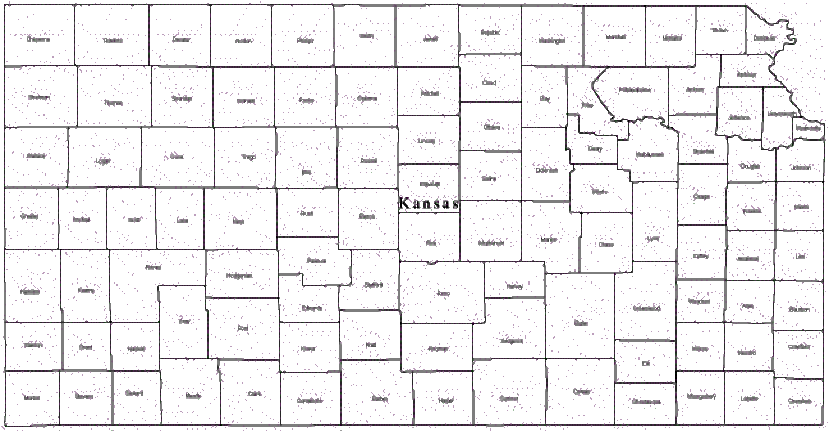

Select the county that most applies and call the nearest Kansas bat control expert for your Kansas bat problem.
Disclaimer: Our listings of Kansas bat problem and Kansas bat control services are offered by our listings as an open service. The presence or lack of presence on this listing does not imply as an endorsement by the owner of these referrals. VaMoose Varmint highly recommends that the property owners carefully examine any Kansas bat problem or Kansas bat control business before engaging in its services. We have provided information to assist you in finding a Kansas bat control, or Kansas bat problem service in your area.
Kansas Bat Control and Kansas Bat Problem
The Big Brown Bat is the most common bat problem in Kansas. This bat control species may have up to 2 pups in a litter. This bat problem species likes to group together in man made structures in large colonies called maternity colonies leaving open the need for a bat control specialist. There are many other bats that live in Kansas that my not lead to bat problems or need the expertise of a bat control technician. I find this next bat species very interesting. The Red Bat may not be a common bat control species but are very prolific. It can be noticed different because of a few reasons. First the hairs are rust red to a chestnut red and frosted white tips. They may even have a yellowish to reddish fur and the underneath of the bat will be paler than on the back. They also have small round ears. They will get up to a weight of 14 grams and a total length of 124mm. The red bat is different in reproduction than many other bats and this may lead people believe they would lead to a Kansas bat problem. Each female bat will produce one to five pups that are born in midsummer each year. Most species of bats only produce one to two pups each year so the red bat is high in reproduction for bats. The gestation period is 3 months long. Red bats live in trees and try to keep themselves covered at all times and are very solitary. They will range from tree limbs, larger sunflowers and lower shrubs. Sometimes you will be able to look up into a tree and see them. When the pups are still young they will not be able to fly for at least a month and are dependent on the mother for five to six weeks after birth. Because of this mothers will leave their young to find food for them. Also in large rainstorms the pups will climb to the underneath parts of the mother. After these storms you can see mothers with their young on the ground because they were knocked out. Red bats are very similar to most of the bats in North America as they will feed on insects. This is common and helps keep the insect population down where bats are present. Many people do not realize but these bats make sure that insects are held in check. The Red bats are known to be nocturnal and feed at night but they can be seen during cloudy days searching for insects to prey on. The red bats can maintain flight speeds of up to 40 miles per hour. Red bats predators include blue jays, owls and hawks. Red bats are well known to Kansas but they will migrate south and east during the winter months. Unlike many bats they will stay active in the winter.
Kansas Bat Control, and Kansas Bat Problem providers in these counties: Allen county, Anderson, Atchison, Barber, Barton, Bourbon, Brown county, Butler, Chase, Chautauqua, Cherokee, Cheyenne, Clark, Clay, Cloud, Coffey, Comanche, Cowley county, Crawford, Decatur, Dickinson, Doniphan, Douglas, Edwards, Elk, Ellis, Ellsworth, Finney, Ford county, Franklin, Geary, Gove, Graham, Grant, Gray, Greeley, Greenwood county, Hamilton, Harper, Harvey county, Haskell, Hodgeman, Jackson, Jefferson, Jewell, Johnson, Kearny, Kingman, Kiowa, Labette county, Lane, Leavenworth, Lincoln, Linn, Logan, Lyon, Marion county, Marshall, McPherson, Meade, Miami county, Mitchell, Montgomery, Morris, Morton, Nemaha, Neosho, Ness, Norton, Osage, Osborne county, Ottawa, Pawnee, Phillips, Pottawatomie, Pratt, Rawlins, Reno, Republic, Rice, Riley, Rooks county, Rush, Russell, Saline, Scott, Sedgwick, Seward county, Shawnee, Sheridan, Sherman, Smith county, Stafford, Stanton, Stevens, Sumner, Thomas county, Trego, Wabaunsee, Wallace, Washington county, Wichita, Wilson, Woodson, Wyandotte county.